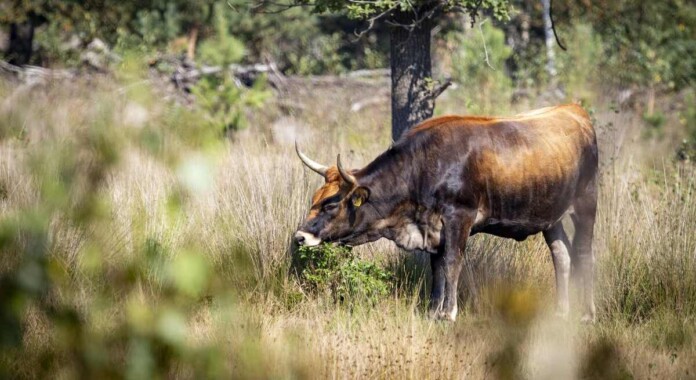A rewilding charity in the UK is set to introduce the first herd of tauros to the British Isles, aiming to replace a lost giant: the aurochs. This ancient species is the ancestor of all domestic cattle and once played a crucial role as a keystone species, maintaining the dynamic and biodiverse ecosystems of Eurasia.
The Tauros Program, initiated in 2008 in the Netherlands, brought together international cattle breeding experts to “back-breed” an animal that closely resembles the wild aurochs. Unlike efforts to resurrect the woolly mammoth through gene alteration, this program focused on identifying ancient domesticated cattle breeds with significant aurochs DNA and interbreeding them over time while acclimatizing them to a wild lifestyle.
The result is the tauros, an impressive animal that stands six feet tall at the shoulder, boasts 32-inch-long horns, slender legs, powerful muscles, and a striking black coat. Tauros are now set to be introduced to the Dundreggan Estate in Scotland, marking the first presence of large wild bovines in the countryside since the early 17th century. Covering nearly 10,000 acres near Loch Ness, this introduction aims to enhance biodiversity and promote ecotourism.
Tauros will contribute to the ecosystem in various ways. Their grazing creates a mixed habitat, fostering rich forest edges where birds thrive and creating trails in the understory for other wildlife. Their dung, hair, placenta, and even carcasses enrich the landscape by enhancing soil biodiversity, feeding scavengers, and providing nesting materials for birds. Their grazing behavior also aerates the soil, suppresses overgrown plants, and creates conditions for seed germination.
“Our tauros project is about looking forward while learning from the past as we restore nature-rich landscapes that support wildlife and people, resilient to future environmental challenges,” said Steve Micklewright, chief executive of Trees for Life, the charity spearheading the initiative. “We also want to offer people the chance to experience the awe and wonder of coming close to an animal that feels truly wild.”
Although the Highland bull, a Scottish heritage cattle breed, inhabits the region, it was not included in the Tauros Program due to insufficient aurochs DNA. Since the program’s inception, tauros breeding has been ongoing in Spain, Portugal, Croatia, Czechia, Romania, and the Netherlands, with different breeds chosen for each location to best represent aurochs traits while adapting to local habitats, food sources, climates, and predator interactions.
In 2027, it will mark 400 years since Europe last had a massive wild bovine roaming its grasslands and forests. However, thanks to the dedicated efforts of ecologists across the continent, this milestone is poised to be the last of its kind.
